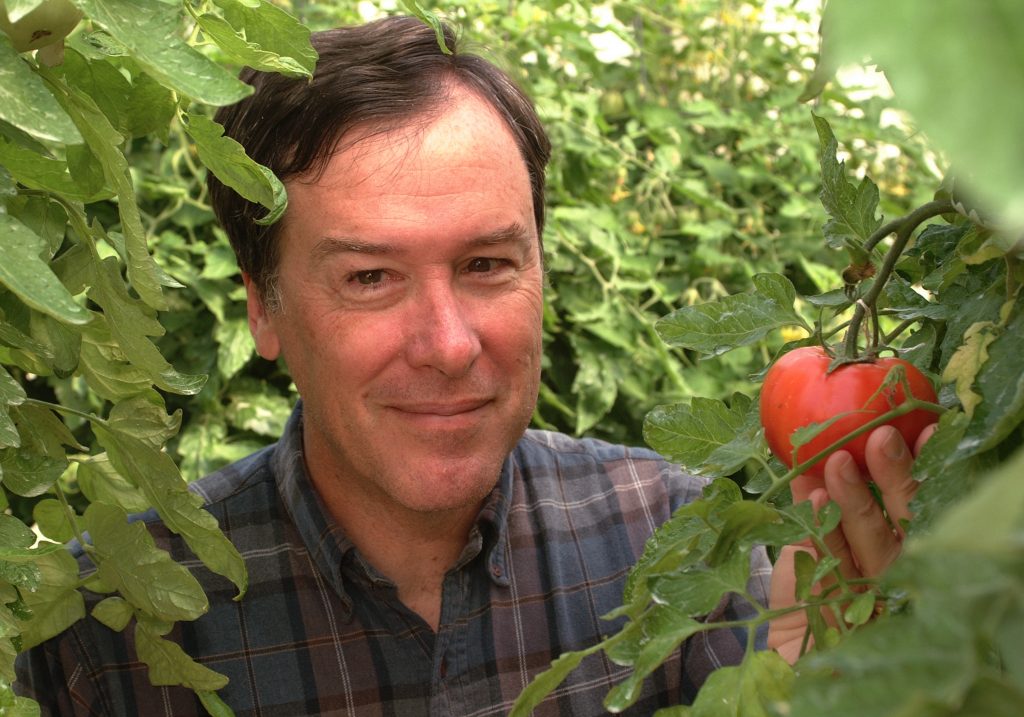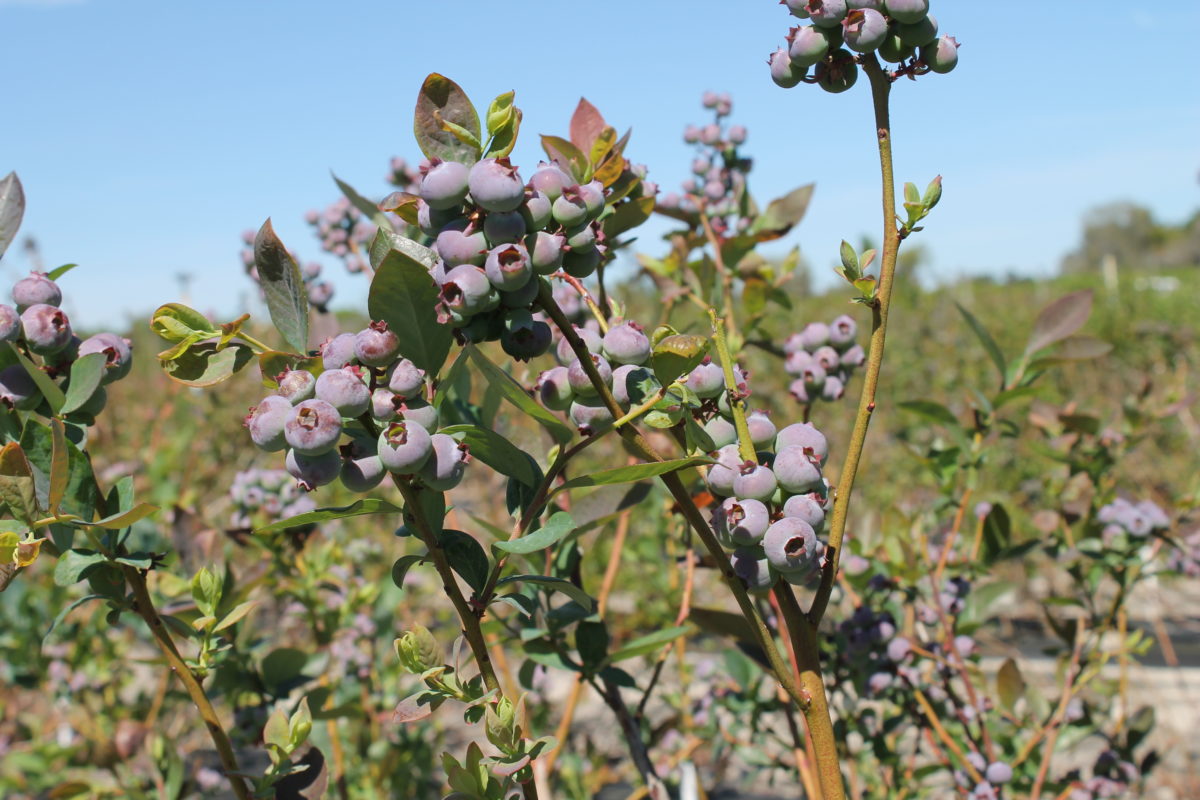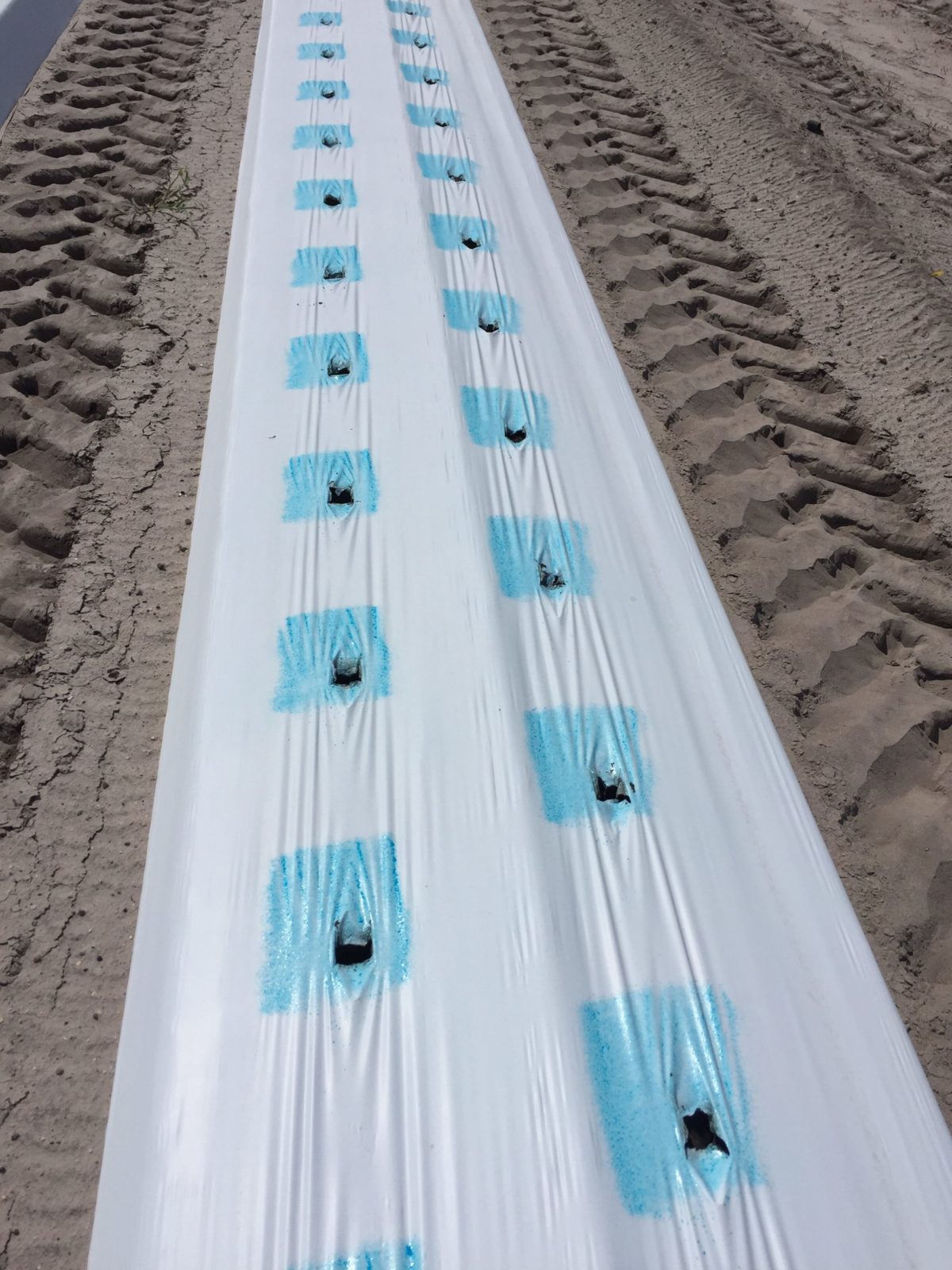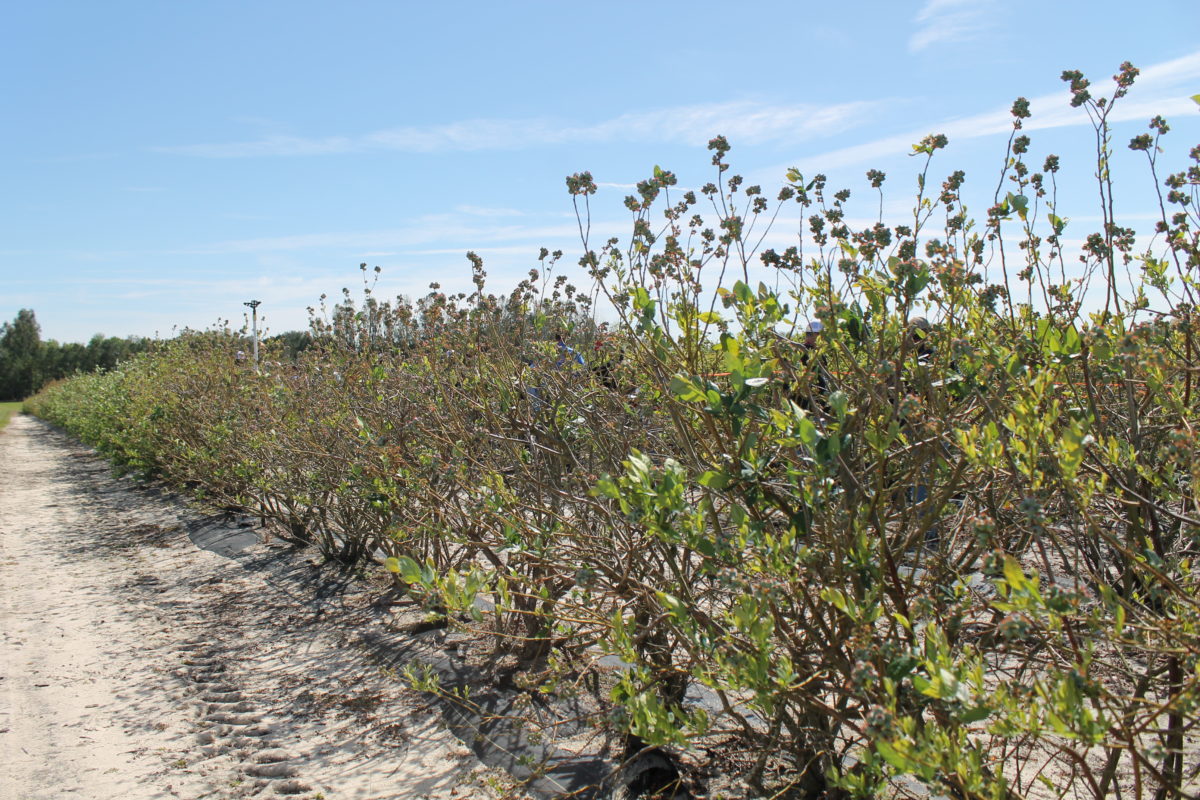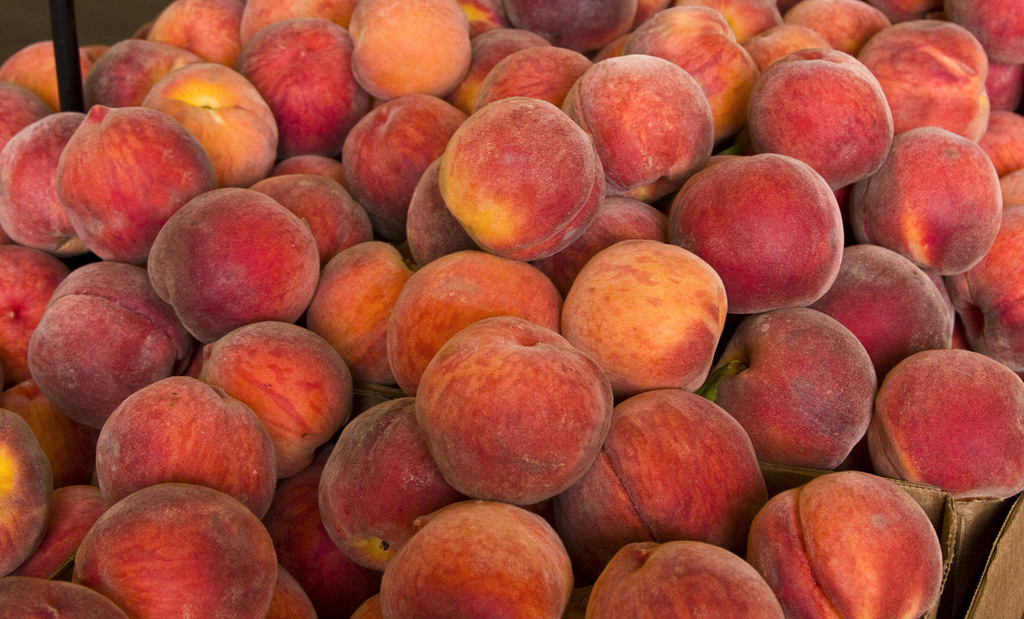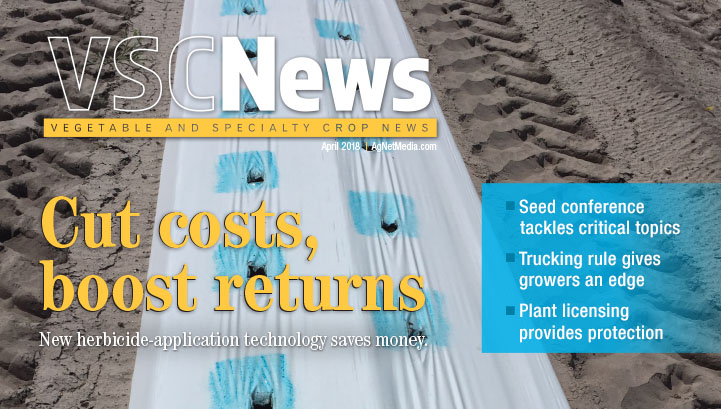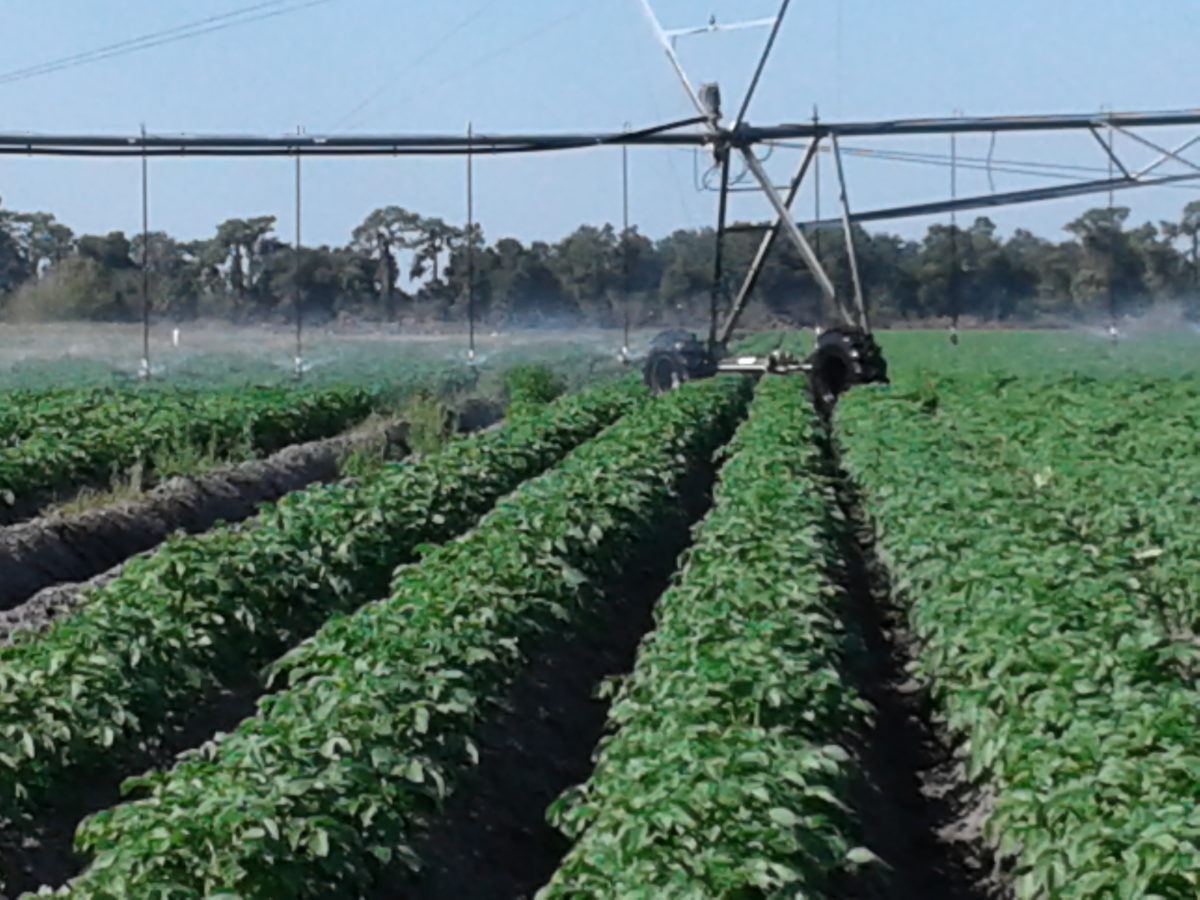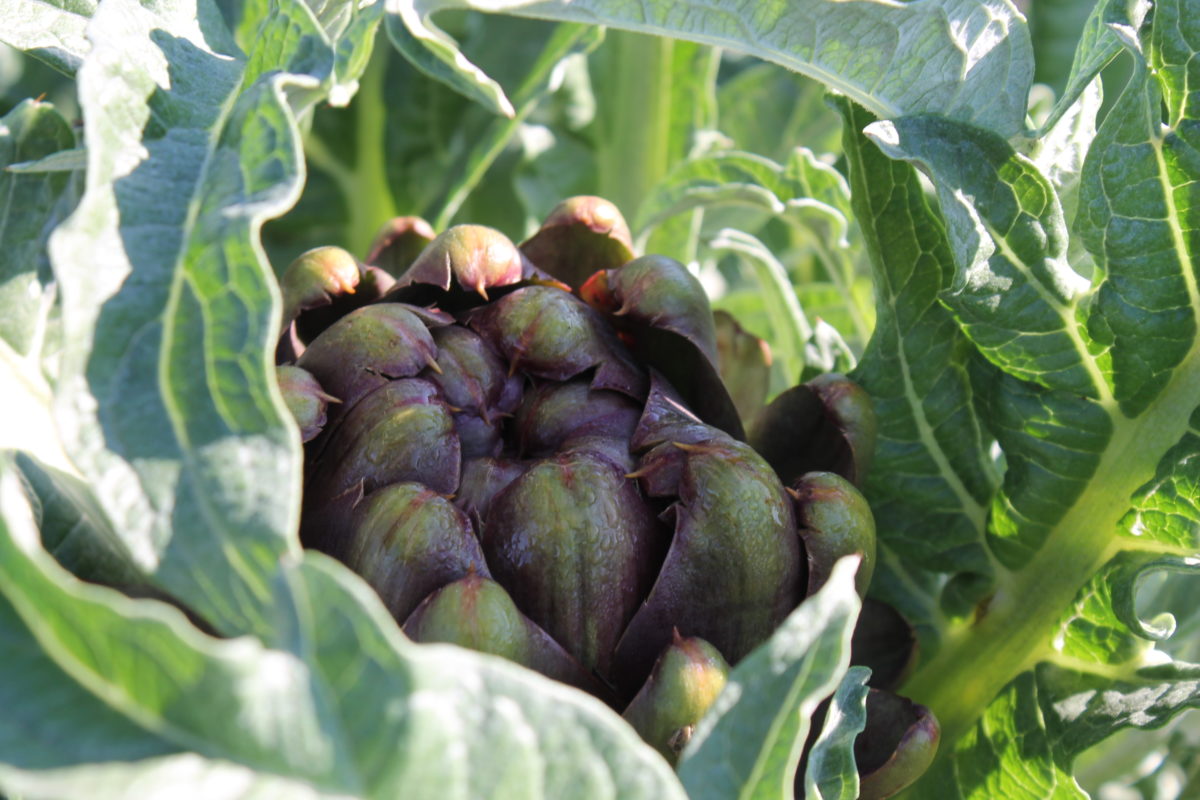GAINESVILLE, Fla. — Imagine sinking your teeth into a fat, bright red tomato, whose aroma promises a tantalizing treat. Instead, you realize you got a great looker, but not a great taster. That’s because the consumer has been left out of the breeding process. For 20 years, Harry Klee, a professor of horticultural sciences at the UF Institute of Food …
Blueberry Variety Update
The University of Florida’s (UF) blueberry breeding program has been bringing growers new varieties for over 40 years. Patricio Munoz, assistant professor at UF and head of the blueberry breeding program, recently highlighted two varieties released in 2016, Keecrisp and Patrecia. According to Munoz, Keecrisp is a very crisp variety, hence the name. This variety creates a firm fruit. “It’s …
Hole-Punch Technology Dramatically Reduces Herbicide Use
By Nathan S. Boyd and Arnold Schumann The majority of vegetables grown in Florida are grown on raised, fumigated beds covered with plastic mulch. This production technique has been widely adopted because the combination of plastic mulch and drip tape improves water and fertility efficiency. The use of plastic mulches has many additional benefits, including improved crop quality, reduced water …
Florida Blueberry Growers Report Crop Loss Due to Gall Midge
Update: The FBGA sent another email on March 30 with some survey results. This is what it reported: “Approximately a third of the state’s acreage has responded to our survey, 95% of which are reporting damage at some level. Over two-thirds of the acreage are reporting more than 20% crop loss (many of which indicated they are seeing between 30-50% …
Post-Irma Root Rot Concerns in Georgia Peaches
Most of the nation is aware that the Florida citrus industry suffered greatly when Hurricane Irma made landfall in September 2017. The storm resulted in approximately $760 million in citrus damage. In addition, the Florida fruit and vegetable industry sustained about $180 million in loss. By the time Irma reached Georgia, it had weakened substantially, going from a hurricane to …
Sneak Peek: April 2018 VSCNews Magazine
Growers are constantly striving to cut costs while creating the best product possible. The April issue of VSCNews magazine features an article by University of Florida (UF) researchers Nathan Boyd and Arnold Schumann about a new technology that could drastically reduce the use of herbicides. Also featured in the April issue is an article by Jack Payne, University of Florida’s …
Grower Participation Needed for BMP Survey
The University of Florida Institute of Food and Agricultural Sciences researchers at the Southwest Florida Research and Education Center would like to better understand best management practices (BMPs) used by area growers. BMPs are individual practices or combinations of practices that are effective at improving the quality of surface water and ground water. Growers provide a public service by performing …
Fertigation Improves Potato Production
By Guodong Liu Seepage irrigation has been the most commonly used irrigation method for potatoes since the crop was first grown in Florida in the late 1800s. This traditional irrigation method doesn’t require much investment by the grower. Seepage irrigation waters the crop from the bottom by raising the water table, but it lacks water-use efficiency. DRAMATIC WATER SAVINGS Potatoes …
Florida Artichokes Starting to Look Promising
Gary England, University of Florida Institute of Food and Agricultural Sciences (UF/IFAS) regional specialized Extension agent and director of the Hastings Agricultural Extension Center, is excited to have an artichoke harvest this year at the Cowpen Branch Road Demonstration and Research Farm in Hastings. Although many research projects occur at the 50-acre farm, England says he would not call the …
Hydrogen Cyanamide for Low-Chill Peaches in Florida
By Tripti Vashisth and Mercy Olmstead Interest in Florida peach production remains steady, with approximately 2,000 acres in the state. Florida peach growers have a number of advantages: 1) Early flowering and fruit set result in the ability to harvest fruit earlier in the domestic market window, yielding higher economic returns. 2) Recent surveys show that consumers prefer local produce, …










